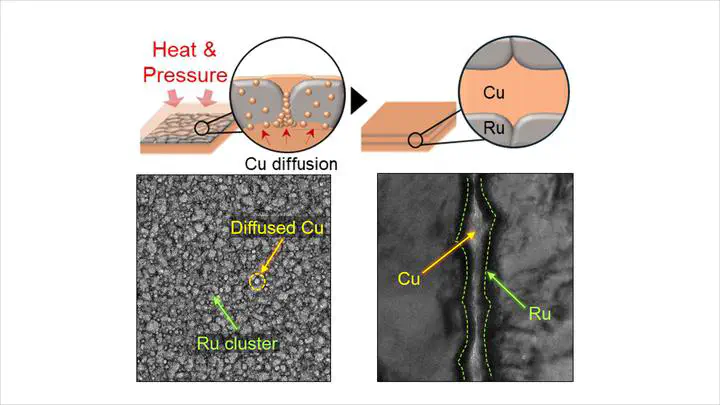6. Ru Passivation Layer Enables Cu–Cu Direct Bonding at Low Temperatures with Oxidation Inhibition

Stacking semiconductor chips allows for increased packing density within a given footprint and efficient communication between different functional layers of the chip, leading to higher performance, improved speed, and reduced power consumption. In such vertical stacking, achieving homogeneous electrical and mechanical bonding between heterogeneous chips is crucial, which is termed Cu to Cu direct bonding (CCDB) technology. However, conventional CCDB required a high temperature of over 250 °C to allow Cu diffusion and a vacuum condition for inhibiting Cu oxidation, limiting its practical utilization. Here, we propose that the covering of the Ru layer enables a reliable CCDB as low as 200 °C without concerns regarding oxidation. The bonding strength was as high as 2.24 MPa, and it was endurable at the −45 and 125 °C temperature cycle test for 500 cycles. Through microscopic analysis, we have identified that Cu diffuses through the intercluster boundaries of the Ru layer and moves to the surface, and these atomic Cu ions are recrystallized at the bonding interface, enabling stable bonding at lower temperatures. Specifically, we observed a trade-off between Cu diffusion distance and oxidation inhibition capability depending on the thickness of Ru and found that a 6 nm-thick Ru is optimal, balancing these factors.